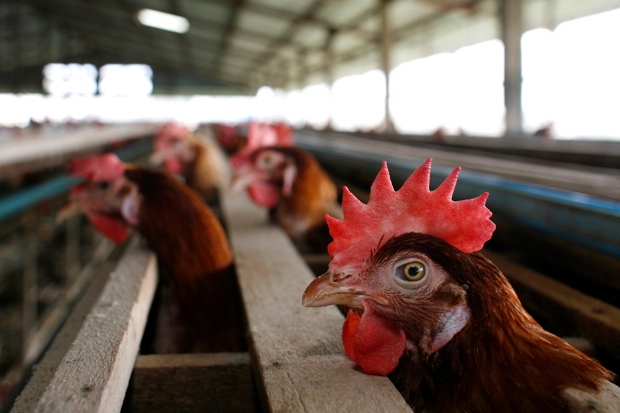Yesterday, the government abandoned its plans to scrap farm animal welfare codes, but if you think that means the cheap chicken you buy is ethical, you’re a bird brain.
The embarrassing u-turn was made after animal rights charities pointed out that asking the industry to come up with its own guidelines wasn’t going to work. The poultry industry is hardly going to introduce new rules that ensure chickens have more space to roam in if it might impact on profits. Pardon the pun, but it’s a bit like asking turkeys to vote for Christmas – they simply won’t.
But can you really trust the government to ensure high standards of farm animal welfare? Not really, is the simple answer. At the moment, animal rights are governed by EU laws. The statutory codes set out how the UK government would like the law to be interpreted. For example, EU law says that farmers should try other means before docking pigs’ tails. The UK interprets this more strongly as a ‘last resort’ measure. But in practice, on intensive indoor farms, pigs have to have their tails docked because otherwise they will chew on each other in their absolute boredom.
Similarly, the current law does little to stop overcrowding in chicken houses. At the moment, 95 percent of chickens for eating in Britain are kept in barns. The minimum stocking density under the EU law is 42kg per square metre, whereas in the UK it is 39kg per square metre. I’m sure every little matters to a broiler chicken, but this is still barely the size of an A4 piece of paper to move around on. In contrast the RSPCA insist on just 30kg per square metre.
Scrapping the codes would hardly have made much difference anyway, because the government standards are already pretty poor. The only thing it might do is make the Tories look slightly more caring towards their feathered friends for a few hours.
But it’s not going to help the chickens. There is an issue here that no one has the guts to say, certainly not the government nor the food industry: if you want your chicken to be raised ethically, you have to pay more. You can’t rely on the government to ensure its welfare. The average chicken reared under the current guidelines has probably had a very short life – just five to six weeks, has never been outside and has been fed on genetically modified (GM) soy. If this makes you uncomfortable, then it’s best to look at other options.
If you just want some reassurance that the chicken has had a slightly longer life – say more like 49 days rather than 35 – then buy RSPCA Assured, which will only cost a few more pence. An organic chicken can cost up to five times the price of a normal one.
Before people protest at the unfairness of this for people on lower incomes, consider this: many celebrity chefs have made their living out of telling people how to eat good food affordably. Their top tip? Eat less meat and choose higher quality products. They also advocate making money go further by buying cheaper cuts and reducing waste.
The fact is people do care about where their food comes from, passionately. We in Britain are known as a nation of animal lovers. Over the past fifty years, we have led the world in welfare, banning veal crates, battery cages and gestation crates for pigs long before the rest of the Europe. But in recent years, farm animal welfare has been neglected. We have failed to stop the drive towards zero-grazing for cows or mega farms for pigs.
The charities have stepped in where they can, setting up labelling schemes and educating consumers about how animals are raised. Most recently the campaign Eating Better has been set up by a conglomerate of charities to suggest we eat less and choose higher welfare meat. But ultimately it is about taking responsibility for our own decisions. The government can’t be relied on to ensure high welfare standards are upheld. If you want to eat a happy chicken, then it’s up to you to decide what is acceptable.
The Ethical Carnivore by Louise Gray will be published by Bloomsbury in August 2016.






Comments